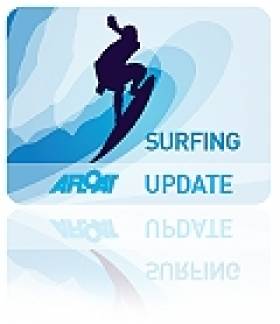Displaying items by tag: Alan Stokes
Stokes Takes Top Spot at Expression Session
British surfer Alan Stokes's massive air-reverse won him the Quiksilver Expression Session in Bundoran this weekend.
Stokes takes home prizemoney of €3,500 in the speciality event for Irish and UK surfers with a simple 'best moves' format.
The 30-year-old from Newquay said he was “stoked and really happy with the win. There were great waves in the end and it was good to have it on a wedge because it is high performance surfing and it all came good.
"It is my first trip to Bundoran," he added, "I love it and it is great. Guinness and waves I can do airs on is as good as it can get for me.”
Meanwhile, Cain Kilcullen from Easkey, Co Sligo was awarded the best local performance to earn himself a wildcard in the Relentless Boardmasters in Newquay this August.
























































